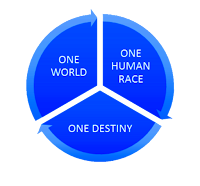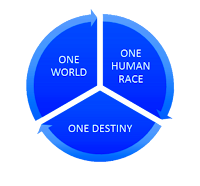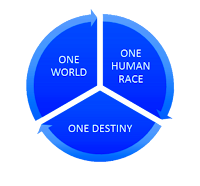A JAMAICAN CHILDHOOD - REFLECTIONS OF
T
|
he story of Shaka is unique, as seen through his perceptual prism, but is not markedly different, in recalling his life, from that of the childhood of thousands of Jamaican children who grew up in the land of 'wood and water' throughout the 184 year period since the 1833 Slavery Abolition Act, which set in motion the process of freeing his ancestors from slavery.
S
|
haka's forebears were indeed brought to the famous and, for the native Taino Indians who were the island's first inhabitants, and the African slaves who replaced them, infamous Island of Xamaica, later becoming known as Jamaica, from Africa. It is unlikely that Shaka's blood-line or lineage, were he to trace it, would take him back to the famous and indubitably courageous Maroons of Jamaica, who were the first slaves brought to the Island by its first European colonisers, the Spaniards, but were set free after the British took over the Island and drove the Spaniards out. No, it is more likely that Shaka's family tree would take him back to the later arrival of slaves who came from West Africa, and probably people coming from the Mediterranean and slave-owning white plantation owners.
T
|
hat as it maybe, Shaka was one of 6 children born to his parents in a small district called Hillside, in the mid-Eastern part of Jamaica. This part of the Island has a notable history, being the parish in which the famous/infamous Morant Bay Rebellion took place, on 11th October 1865, leading to the death of nearly 500 black Jamaican men and women, including that of two Jamaican National Heroes; Paul Bogle and George William Gordon.
I
|
t is not surprising that this comparatively small Island, of only about 4,423 sq.miles, or 146 miles long and 52 miles wide, at its widest points, has an ambivalent reputation, but also one which is exceeds its size.
S
|
haka and his 5 siblings and parents lived in the small village of Hillside, which had probably no more than about 150-400 people at its most populous time. The district is situated to the east side of what Shaka came to know as the Johnson River, which, when it rains heavily, would sometimes cut the district off from the rest of the neighbouring districts, such as Surge Island, Bath, Seaforth, Whitehall, Morant Bay, Duckensfield, et al, as the water would wash away or damage the bridge. This was because the district is situated between the River, on the west, and the mountain ranges between the parishes of ST Thomas and Portland, to its north.
T
|
he family lived in a two bedroom house, made of timber, with its roof made of sheets of zinc. The family's kitchen was a separate structure, made of bamboo wattling, and its roof made of coconut leave thatching. The kitchen had an earthen oven and a wood burning fireplace for cooking. The toilet which Shaka and the family used was situated several yards from both the kitchen and the house. The walls were made of board, with a zinc roof, and had two seats built into a raised counter or platform, situated above a wide hole dug several metres into the ground under it. Shaka remembered well how fearfully he was of falling into the pit, when he first used the toilet. Shaka could also remember a time when there was another small building on the property, where his paternal grandmother, Mrs Leanora Bennett, used to live, and would be cared for by his older sister and his mother. During the dark nights, the family would be reliant on paraffin fuelled lamps and the Moon and stars for their lighting.
OWOHROD






Comments